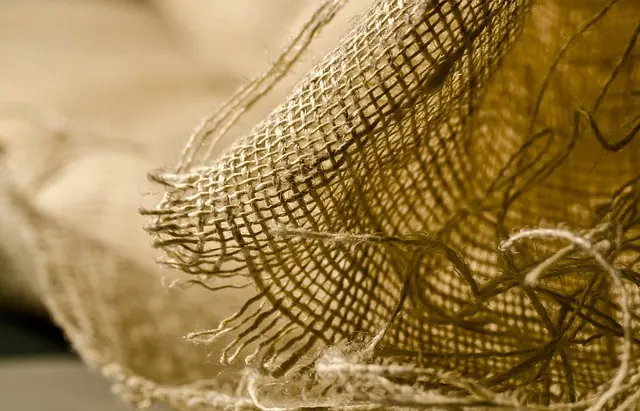Kratom, a tropical tree from Southeast Asia, contains alkaloids like mitragynine and 7-hydroxymitragynine that may offer kratom-fueled muscle relief by managing inflammation and pain. These compounds mimic opioid effects without the same side effects. Kratom strains Maeng Da and Bali are notable for their analgesic and anti-inflammatory benefits, respectively. Maeng Da is known for its strong pain-relieving properties, while Bali is associated with a calming effect that promotes well-being. Despite its potential, the FDA has raised concerns about kratom's safety and efficacy, emphasizing the need for cautious use and professional medical guidance. It's important to consider individual responses and legal restrictions when exploring kratom for kratom-fueled muscle relief. The holistic approach to incorporating kratom into a health regimen should include proper nutrition, hydration, sleep, and exercise for optimal results in managing chronic pain and post-exercise muscle soreness within a natural healing framework.
Kratom, a botanical derivative from Southeast Asia, has garnered attention for its potential anti-inflammatory and analgesic properties. This article delves into the multifaceted role of kratom in mitigating inflammation and providing muscle relief, offering insights into the most effective strains for these benefits. By examining kratom’s interaction with the body’s pain and inflammation response, we explore how it can be integrated into a comprehensive holistic health strategy, highlighting the promise of kratom-fueled muscle relief as an alternative or complementary therapy. Join us as we navigate the science behind this natural remedy and its applications for those seeking respite from inflammatory discomfort and muscular pain.
- Understanding Kratom and Its Role in Managing Inflammation and Pain
- Exploring Kratom Strains for Effective Muscle Relief and Anti-Inflammatory Benefits
- Integrating Kratom into a Holistic Approach for Inflammation Reduction and Muscle Soreness Management
Understanding Kratom and Its Role in Managing Inflammation and Pain

Kratom, a tropical deciduous tree native to Southeast Asia, has garnered attention for its potential role in managing inflammation and pain. The leaves of kratom contain alkaloids, notably mitragynine and 7-hydroxymitragynine, which are believed to interact with the body’s opioid receptors, offering both analgesic and anti-inflammatory effects. These alkaloids have been studied for their efficacy in providing kratom-fueled muscle relief, which can be particularly beneficial for individuals suffering from chronic pain conditions or experiencing post-exercise soreness. The unique properties of kratom suggest that it may offer a natural alternative to conventional pharmaceuticals for pain and inflammation, making it a subject of interest in holistic health circles.
Research into the medicinal benefits of kratom is ongoing, with preliminary findings indicating its potential for alleviating symptoms associated with inflammatory conditions. Users report that kratom not only reduces pain but also improves overall well-being, which could be attributed to its anti-inflammatory action. It’s important to approach the use of kratom with caution, as it can have both stimulating and sedative effects depending on the dosage and strain. The FDA has issued warnings about the risks associated with kratom, highlighting the need for further scientific investigation into its safety and efficacy. As such, individuals considering kratom as a means for inflammation reduction and pain management should consult with healthcare professionals to ensure safe and responsible use.
Exploring Kratom Strains for Effective Muscle Relief and Anti-Inflammatory Benefits

Kratom, a plant from Southeast Asia with leaves that contain compounds called alkaloids, has garnered attention for its potential role in muscle relief and anti-inflammatory effects. Among the various kratom strains available, some are particularly noted for their kratom-fueled muscle relief properties. For instance, Maeng Da Kratom is renowned for its potent analgesic qualities, making it a popular choice for individuals seeking relief from muscle pain and stiffness. Its ability to interact with opioid receptors may provide a soothing effect that eases discomfort, potentially aiding in recovery from strenuous activities or chronic pain conditions.
Beyond Maeng Da, Bali Kratom is another strain that has been recognized for its anti-inflammatory and relaxing effects, contributing to muscle relief. The alkaloids present in Bali Kratom, such as 7-hydroxymitragynine, are believed to play a role in reducing inflammation and promoting a sense of well-being. Users often report feeling rejuvenated and with less pain after incorporating this strain into their routine. It’s important for individuals to consult with healthcare professionals before incorporating kratom into their health regimen, as the effects can vary based on factors like dose, frequency, and individual physiology. Additionally, users should be aware of the legal status of kratom in their jurisdiction, as it is subject to regulation in many countries and regions.
Integrating Kratom into a Holistic Approach for Inflammation Reduction and Muscle Soreness Management

Integrating kratom into a holistic approach for inflammation reduction and muscle soreness management presents a natural alternative for individuals seeking relief from chronic pain. Kratom, derived from the leaves of the Mitragyna speciosa tree, has been traditionally used in Southeast Asia for its medicinal properties. Today, it’s increasingly recognized for its potential role in alleviating inflammation and providing kratom-fueled muscle relief. Scientific studies suggest that certain strains of kratom may interact with the body’s opioid receptors, offering analgesic effects without the side effects commonly associated with prescription painkillers. This interaction can be particularly beneficial for those experiencing musculoskeletal discomfort or inflammation resulting from various conditions or physical exertion. When incorporating kratom into a holistic health regimen, it’s essential to consider dosage and strain selection, as these factors can influence the level of relief experienced. For instance, users often prefer strains like Maeng Da for its balanced effects or Bali for its sedative properties, depending on their specific needs and the nature of their inflammation or soreness. It’s also crucial to complement kratom use with a well-rounded lifestyle that includes proper nutrition, hydration, restful sleep, and regular physical activity to ensure comprehensive muscle care and overall health maintenance. This multifaceted approach not only supports the body’s natural healing processes but also promotes long-term wellbeing and resilience against inflammation and pain.
Kratom, a plant with alkaloid compounds, has garnered attention for its potential role in managing inflammation and related muscle soreness. This article has delved into the mechanisms behind kratom’s effects, highlighting the most effective strains for muscle relief and anti-inflammatory benefits. It emphasized the importance of integrating kratom into a broader holistic health regimen to optimize its therapeutic effects. The evidence suggests that when used judiciously as part of an overall wellness strategy, kratom-fueled muscle relief can be a valuable component for those seeking natural ways to alleviate inflammation and discomfort. As with any treatment, consulting healthcare professionals is crucial to ensure safe and effective use of kratom.






